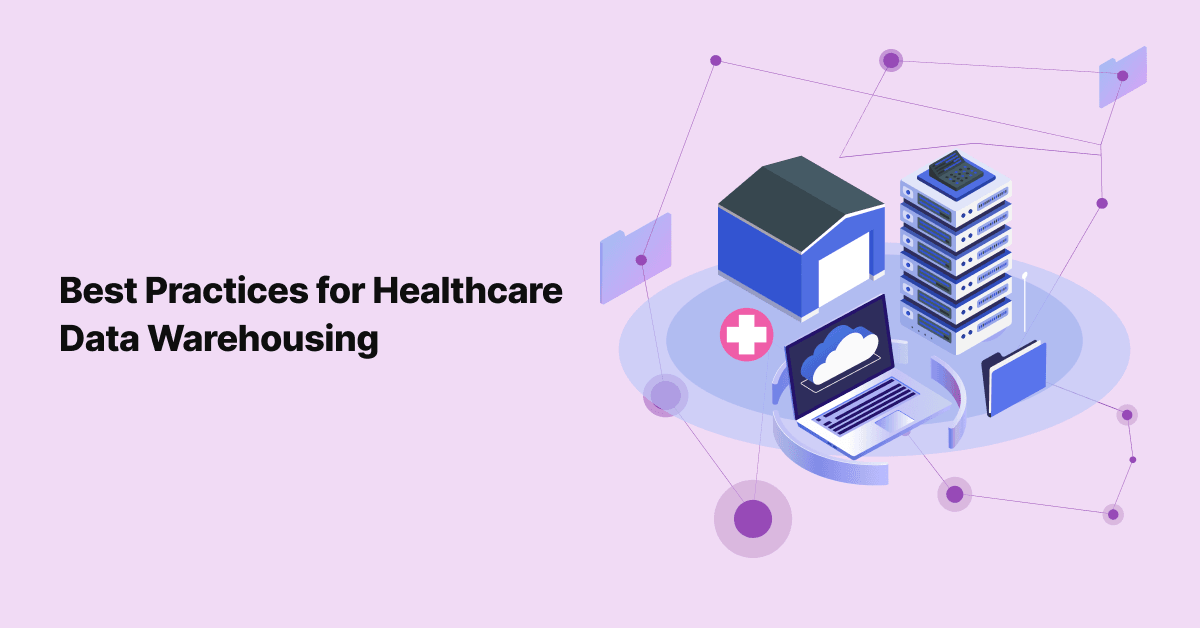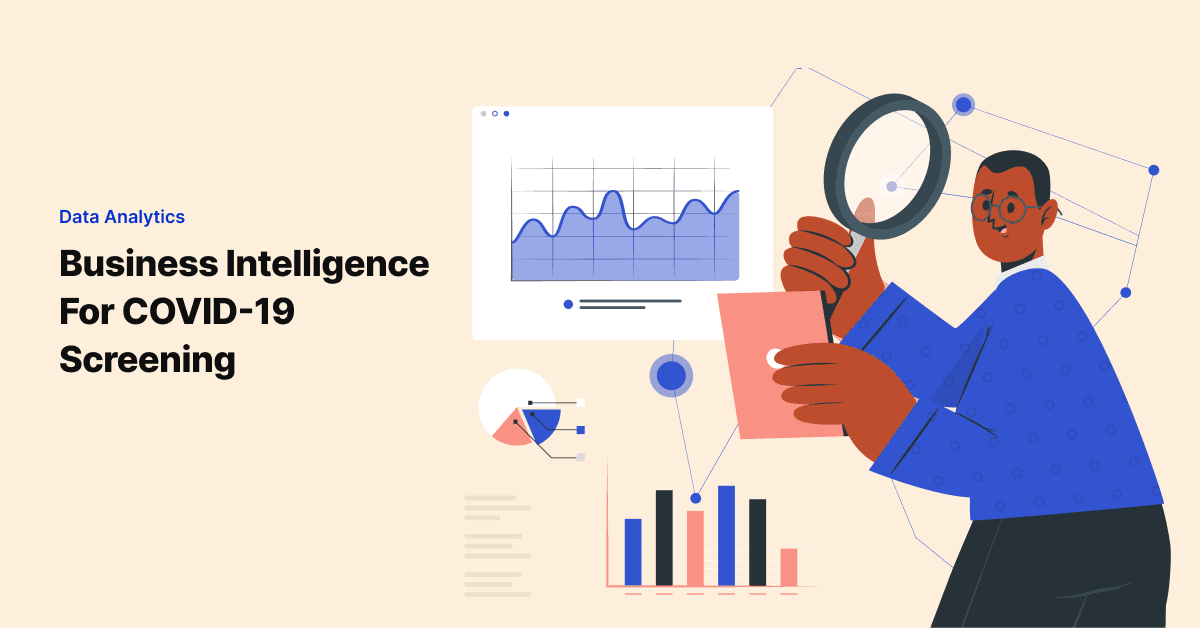
Trends In Cloud Analytics For Healthcare
While it’s no surprise that it can take a bit before large health systems acclimate to the latest technology …

From Electronic Medical Records to billing information, healthcare organizations are collecting more data than ever before. This data is essential for providing high-quality care and improving patient outcomes. However, managing it can be overwhelming and costly. That’s where healthcare data warehousing comes in.
With healthcare data warehousing, organizations can more effectively use their data to inform decision-making, optimize processes, and improve patient care.
In this blog, we’ll explore the top best practices for healthcare data warehousing and how they can benefit your organization. From considerations for data management to ensuring governance, we’ll cover everything you need to know to make the most of your healthcare data. So let’s get started!
In this blog, you will learn:
Healthcare data warehousing is an essential organizational tool that enables healthcare institutions to make the most of their vital patient information. By storing and accessing large amounts of clinical, administrative, financial, and operational data in a secure repository with its own built-in algorithms for analysis and reporting, it empowers decision-makers within hospitals to gain deeper insights into how they operate - enabling them to provide improved care while also increasing efficiency. Healthcare data warehousing provides organizations with unprecedented opportunities for leveraging their valuable datasets by streamlining processes such as tracking performance metrics over time or evaluation outcomes across departments. Ultimately this leads not only to higher quality of services but also better outcomes overall!
Healthcare data warehousing is a complex undertaking, as it requires vast amounts of data to be collected, stored, and safeguarded. Managing this data effectively can present a variety of challenges ranging from secure storage of sensitive patient information to the challenge of identifying meaningful trends in massive datasets. Additionally, there is the challenge of accessing the data quickly enough for medical personnel to make informed decisions in real time. Finally, most healthcare systems need to ensure that their data warehouses are updated regularly to guarantee accuracy and prevent errors.
Some of the primary unique challenges that come with healthcare data warehousing are listed below:
The sheer number of healthcare systems and ancillary systems that you are going to be getting data from can rise very rapidly. Even though you might start with one or two, the list of systems that needs to be integrated goes up quickly. And when you are talking about so many systems you need to integrate data from, that can form a challenge in itself.
Even though things are getting better now, and there are specific data representation standards that are being widely adopted, overall data representation isn’t as consistent in healthcare. So when you are warehousing healthcare data, you might come across the issue of landing and representing the data in the right way that you are bringing in from multiple systems.
If your organization uses more than one Electronic Medical Record System, you might have to face the problem of integrating data from them. Even EMRs in health organizations lack interoperability.
Unless you land and make the data available in an effective manner, you are not going to be able to utilize the data for all of those use cases that need to be addressed.
Sufficient storage space must also be available as health data warehouses store large amounts of patient and medical records that can be used for research and analysis purposes. Security is another key challenge; with maintaining the privacy and integrity of health data being paramount, maintenance of the warehouse itself is crucial to ensure the accuracy and reliability of current and future healthcare initiatives.
One of the best practices in healthcare data warehousing is to establish governance early on. Governance is a set of policies and procedures that dictate how data will be managed, accessed, and used. Without governance in place, it can be difficult to ensure that data is used appropriately and that sensitive information is protected.
Another best practice is to define roles and responsibilities for those who will be involved in the data warehouse. It is important to identify who will be responsible for managing the data, who will have access to it, and how it will be used. This will help ensure a clear understanding of who is responsible for what and that everyone is aware of their role in the process.
Another best practice in healthcare data warehousing is to implement security measures. This includes ensuring that only authorized users have access to the data and that all data is encrypted. Additionally, it is important to have a disaster recovery plan in place in case of any unforeseen events.
It is also important to monitor the usage of the data warehouse. This helps ensure the data is being used appropriately and that sensitive information is not being accessed without permission. Additionally, monitoring usage can help identify potential security risks or unauthorized access attempts.
Another key area in healthcare data warehousing is to perform regular backups of all data. This ensures that if there are any problems with the primary copy of the data, a backup can be used. Additionally, it helps to protect against any accidental deletions or modifications of the data.
Finally, pay attention to auditing tools. Auditing tools help track data access, when it was accessed and what was accessed. This information can be invaluable in identifying any potential security risks or unauthorized access attempts.
Healthcare organizations who work with data warehouses need to be aware of the differences between ETL (Extract, Transform and Load) and ELT (Extract, Load, and Transform). ETL is a process used when a company needs to take raw data from various sources and make it ready for analysis or reporting by converting it into data warehouses. On the other hand, ELT requires that the extracted data from multiple sources are first loaded on one platform before any transformational activities can be done on it. One of the key benefits that come with the ELT process is that it makes low latent data directly usable from the lake. The adoption and management of ETL or ELT is of essence to healthcare data warehousing because, with these processes in place, healthcare providers can quickly access current patient information without any manual work. Additionally, by utilizing these processes, healthcare providers gain an understanding of trends within their patient population which allows them to act preventively instead of reactively. By implementing ELT and ETL techniques in healthcare data warehousing, providers are able to make more informed decisions based on reliable information.
Identification of the right architecture is also crucial when it comes to effective ETL and ELT management. Some of the top architectures that can be considered are Lambda, Kappa, Zeta, and Delta architecture. If you are curious about finding out the best-fit architecture for your healthcare organization, then check Dr. Siv Raman’s recent Healthcare Data Warehousing Bootcamp, where he explains each of the architectures in depth.
Implement Master Data Management in your healthcare organization as a part of your health data warehousing efforts.
Master data refers to the core data around which your business exists, and all transactions happen. Master Data Management (MDM) refers to a technology-driven process of collecting and maintaining data items that identify critical business entities, such as customers or products; in the case of healthcare, it would be patients and providers.
Master Data Management plays an integral role in healthcare revolution, as it ensures the seamless storage, analysis, and interpretation of never-ending streams of sensitive patient information. Healthcare data warehousing typically requires vast resources to properly curate, manage, and govern patient data, and without Master Data Management, organizations are unable to keep up with the pace of industry change. MDM organizations not only enhance efficiency by consolidating multiple databases into one centrally stored system but also simplify security measures taken with such systems by managing extraneous access permissions. What makes MDM so essential for healthcare-focused data warehousing is its discipline in maintaining consistent accuracy across all fields of medical information — a task that will be instrumental in shaping the future of healthcare to become more efficient, reliable, and cost-effective.
The next best practice in healthcare data warehousing would be to implement an Enterprise Master Patient Index using a probabilistic algorithm.
At its core, healthcare relies heavily on the Enterprise Master Patient Index (EMPI) to ensure accuracy and consistency across patient records. By assigning each individual a specific identifier, the EMPI allows multiple healthcare providers to access the same comprehensive medical profile without having to create numerous patient records. As a result, adequate care can be delivered more efficiently by facilitating better coordination of health services among providers. Moreover, this makes critical information about test results, diagnoses, or treatments available instantaneously to all relevant personnel with appropriate authorizations. In sum, EMPI is an essential tool in healthcare data warehousing and is pivotal in allowing the accurate delivery of medical care within a timely manner.
Something that is inherent and vital is the need to directly link your EMPI entity resolution process with your ETL or ELT.
Data governance is a key component of any data warehousing project. This is especially true in healthcare, where patient safety, privacy, and security are top-of-mind concerns. The purpose of a data governance policy is to ensure that data is stored and shared safely among relevant parties in a way that protects patient information from any malicious outside threats. A successful data governance strategy should also have the capability to store large amounts of complex data for various purposes, including reporting purposes and even research. Data governance is essential for the proper management of healthcare data warehouses; without it, there would be no assurance that the safety and security of a patient’s personal information would remain uncompromised.
Data is the lifeline of every organization and more so in healthcare. Healthcare data warehousing is a critical process that needs to be done right to enable evidence-based decision-making, improve patient outcomes and achieve cost savings. We hope you found this article helpful in understanding some of the best practices in healthcare data warehousing. If you wish to deliver better patient outcomes with the power of data & AI, 314e can help get you started on your journey of building a healthcare data lakehouse.
Join over 3,200 subscribers and keep up-to-date with the latest innovations & best practices in Healthcare IT.

While it’s no surprise that it can take a bit before large health systems acclimate to the latest technology …

As healthcare organizations seek to transform into technology-driven, data-rich entities, there is an …

There are many opportunities in healthcare IT that have been exponentially embraced as our entire world faces …